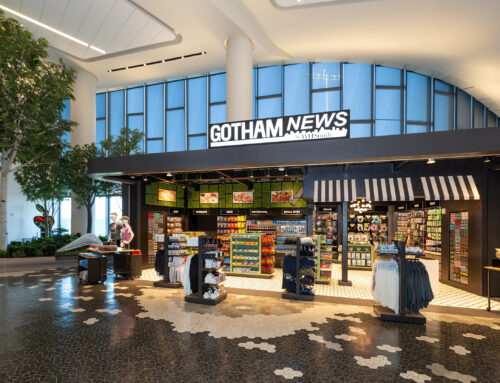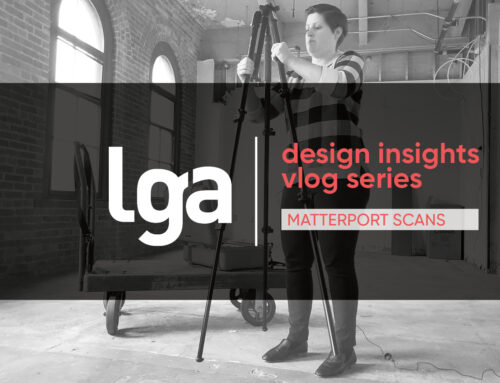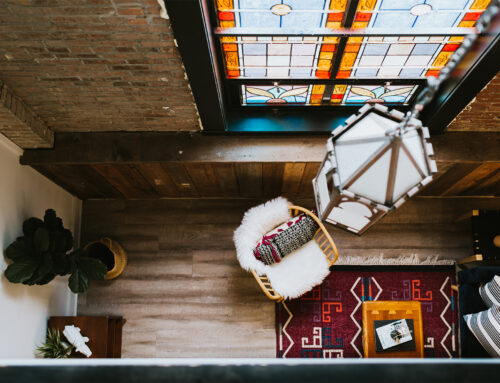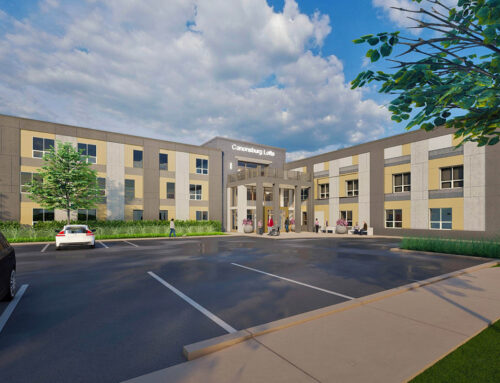Last week we completed documentation for the 7th Floor Renovations at Pitt’s Cathedral of Learning, another collaboration between LGA Partners and the University of Pittsburgh. The 7th floor of the Cathedral will become the new home of the Department of Information Technology (formerly known as Computing Services and Systems Development (CSSD), and recently rechristened as “PITT IT”) as well as the University’s Office of Research. Developed in conjunction with our partners at Franklin Interiors, our team incorporated Agile principles in the development of a diverse set of office neighborhoods, intending to give both user groups the freedom to transition to a more remote workforce while still maintaining a high level of collaboration.
Pitt IT and the Office of Research are thematically very similar, with a heavy emphasis on integrated technology and an experimental, almost incubator-like mindset, making them an ideal match to share this floor of the building. In even more similarities, for both groups, meetings are a way of life. In our early programming sessions with representatives from both user groups, they reported that staff in each of these departments spend at least 80% of their workday in a meeting environment, whether it be a formally scheduled meeting for a team of 12 or an impromptu sidebar between 2-3 coworkers. Both teams also see frequent visitors from across campus and beyond, necessitating flexible “hoteling” workstations for temporary occupancy. The Pitt IT group, in particular, is also wildly diverse in its daily business activities, from ongoing systems development to running a 24/7 helpdesk. The leadership sought to establish “neighborhoods” that suited the individual nature of each group, but also provided the flexibility needed to satisfy a meeting-heavy culture.

Design Team Meeting and Tour of Franklin Interiors
Our collaborative approach meant that LGA’s design team – which included senior project manager Susan McCullum, Sandy Closson on interiors, and Jonathan Glance as principal in charge – turned to our partners at Franklin Interiors. As the local vendor for Steelcase furniture and wall systems, Franklin was able to organize a series of visioning workshops to do a deep dive into how these groups work and function daily. These workshops revealed day-to-day activities from openly collaborative meetings for idea development to head-down, deep thinking tasks that require concentration and privacy. The findings from these workshops yielded a very rich dataset that described a very diverse set of working environments, which required a very nimble design solution. The “agile” nature of the design was intended to give them a flexible space where meetings could happen nearly anywhere, not just in formal meeting rooms. In addition to the more traditional conference and huddle spaces, our design included a “living room” for open collaboration and a “den” for more intense thinking.
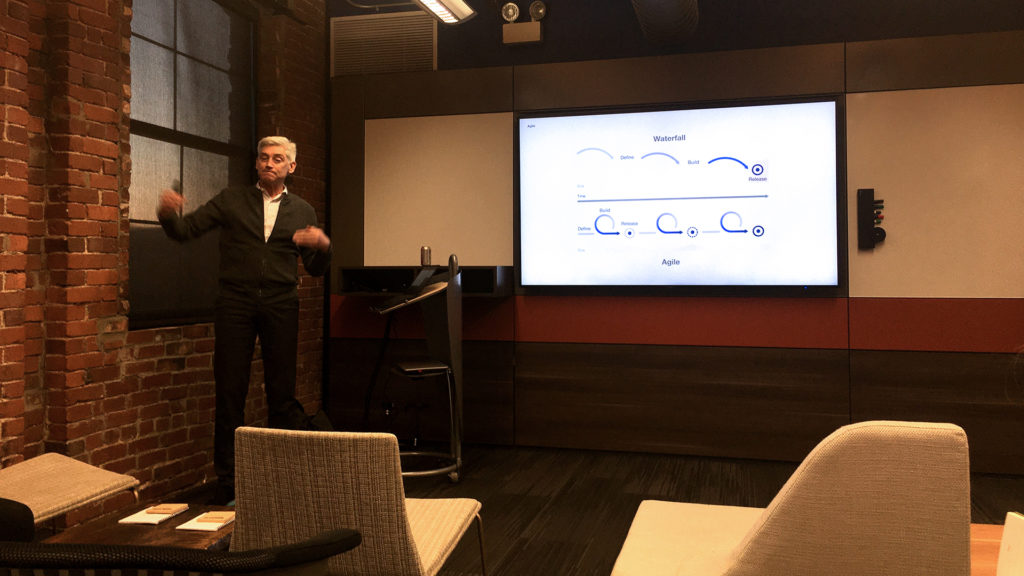
Workshop on Agile Design at Franklin Interiors
Agile methodologies were developed in the early 2000s by software engineers looking for ways to streamline inefficient practices to boost innovation by delivering a product to the market sooner. The massive time lag between programmatic requirements, and the final delivery of technology that answered those needs, led to much frustration on the part of the end-user, who might often need to wait years before seeing a finished product. Technologies, methodologies, and user desires can often change during this lag time, meaning that the final product regularly does not meet the then-current needs. In an educational session held at Franklin Interiors’ showroom, Steelcase’s Workplace Consultant Richard Benoit likened the process to the development of a concept car. The traditional design methodologies (often referred to as the Waterfall approach) would mean months of market research and product development before even a conceptual design could be produced, leading to years of prototyping before the customer ultimately can test drive their concept.
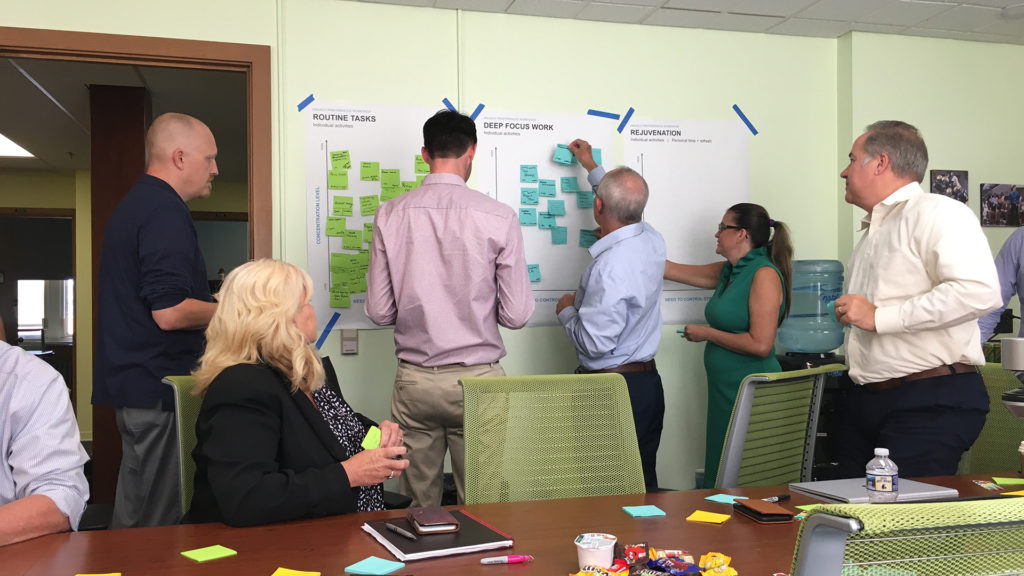
Steelcase Workshop for the Pitt IT Team
An Agile approach instead deploys a more straightforward, less refined solution first – in Benoit’s example: a skateboard — that keeps the client moving, while the design process continues to develop. The Agile design process is instead more iterative. From there, the skateboard evolves into a bicycle, then a scooter, then a moped, each of which furthering the concept through staged deployment, before culminating in a car that represents the latest in technology and the customer’s current needs. Through the alignment of development with business needs, Agile projects are customer-focused and encourage client guidance and participation. As a result, Agile has grown to be an overarching view of software development throughout the software industry, and the concept has begun to bleed into other industries, not the least of which has been design and construction.
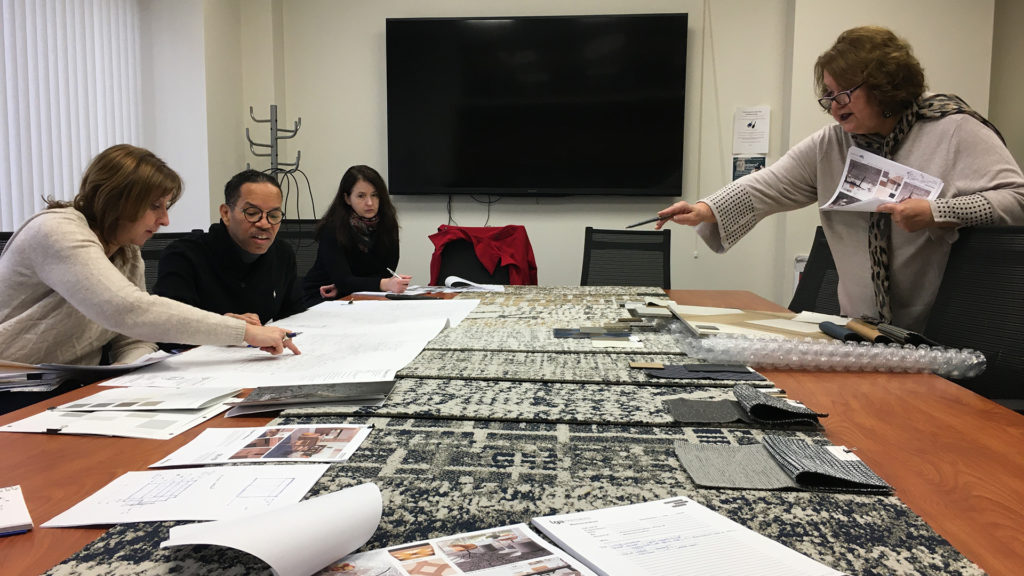
Project Finish Selection Presentation
Ironically, the project was also completed in a very Agile manner. The global COVID-19 pandemic saw LGA’s design team transitioning to remote offices just as we finished the design development phase. Construction documentation, and all of the coordination that was involved in that process, was then produced via collaborative tools including Microsoft Teams and Zoom. Our project team ended up working in the same agile manner as our clients will be in the finished space, allowing us valuable – and entirely unexpected – insight into this process, which has changed the very nature of how we perceive the office environment. We will likely continue considering the benefits of and experimenting with Agile work processes both in our future projects and within our own office.
 Author
Author
Sean Sheffler RA, AIA, LEED AP
Associate

